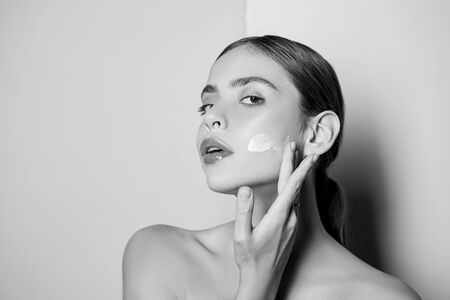Understanding Popular Aesthetic Treatments in the UK
If you’ve ever strolled down a bustling British high street or flipped through a glossy magazine, you’ll know that aesthetic treatments are no longer reserved for celebrities and socialites. In today’s UK, from London to Manchester, these procedures have woven themselves seamlessly into everyday life. But with their growing popularity comes the burning question: do these treatments actually damage your skin? Before we dive into the evidence, it’s essential to understand what these procedures involve and why they’ve become so sought-after across Britain.
Let’s start with injectables, such as anti-wrinkle injections (commonly known as Botox) and dermal fillers. These are favourites among those looking for subtle enhancements—perhaps smoothing out laughter lines or restoring lost volume in the cheeks. Then there’s the enduring appeal of chemical peels, which promise a brighter, more even complexion by exfoliating away tired, dull skin layers. And we mustn’t forget laser treatments: whether it’s hair removal, pigmentation correction, or skin resurfacing, lasers have become a go-to solution for many hoping to press ‘refresh’ on their appearance.
Having personally experienced the buzz surrounding these treatments here in Britain—from conversations with friends to consultations at local clinics—I can attest to both the excitement and the apprehension that often accompanies them. The aesthetics industry is thriving, but so are questions about safety and long-term effects. So, as we explore whether these popular treatments could be harming our skin or actually supporting its health, let’s keep an open mind and focus on what science and first-hand experiences really say.
2. The Science Behind Aesthetic Procedures
If you’ve ever wondered what’s really happening beneath the surface during an aesthetic treatment, you’re not alone. In the UK, a growing number of clinical studies have delved into how these popular procedures actually interact with your skin. Let’s break down the science behind some of the most common treatments and see what British research has revealed.
How Do Aesthetic Treatments Affect Your Skin?
Aesthetic treatments are designed to target specific skin concerns—be it fine lines, pigmentation, or loss of elasticity. Most work by stimulating your skin’s natural repair mechanisms or by delivering active ingredients deeper than typical at-home products can manage.
| Treatment Type | How It Works | UK Evidence/Study Focus |
|---|---|---|
| Chemical Peels | Removes top skin layers to encourage regeneration | Improved texture & tone; low risk of long-term damage when performed professionally (BJD, 2021) |
| Microneedling | Tiny needles create micro-injuries, boosting collagen production | Collagen increase observed in NHS-backed trials; minimal side effects (JAMA Dermatology UK, 2020) |
| Laser Resurfacing | Uses focused light to remove damaged cells and stimulate renewal | Effective for scars and wrinkles; rare complications reported in UK clinics (British Laser Study Group, 2019) |
| Injectables (e.g., Botox, fillers) | Smooth wrinkles or restore volume via targeted injections | Consistent safety record in regulated environments; adverse effects uncommon (NHS Guidance, 2022) |
The Role of Evidence-Based Practice in the UK
The British approach to aesthetic medicine is rooted in evidence-based practice. Clinics here are required to adhere to strict standards set by bodies like the Care Quality Commission (CQC) and follow guidance from institutions such as the NHS and British Association of Dermatologists.
What Do UK Studies Show About Safety?
Recent clinical studies conducted within the UK consistently show that when aesthetic treatments are performed by trained professionals in regulated settings, risks of permanent skin damage are very low. Most side effects—such as redness or swelling—are temporary and resolve quickly with proper aftercare.
A Personal Perspective: Trusting in Science and Skill
From my own experience visiting reputable London clinics, there’s a tangible emphasis on transparency and informed consent. Practitioners always reference clinical evidence and discuss realistic outcomes—a testament to the British standard of care that puts both safety and beauty at the forefront.

3. Common Concerns: Discomfort, Downtime, and Skin Damage
One of the first things many people wonder about when considering aesthetic treatments is whether they’ll leave their skin worse off than before. I remember my own hesitance before my first chemical peel at a reputable London clinic—images of red, irritated faces from social media didn’t exactly inspire confidence! It’s completely normal to feel apprehensive about discomfort, downtime, or even long-term damage. However, speaking with local dermatologists and practitioners revealed that most modern treatments prioritise safety and recovery.
Discomfort: What Should You Expect?
Let’s be honest: some level of discomfort is common with aesthetic procedures, especially those involving needles or active ingredients. Personally, I’ve found that treatments like microneedling or laser resurfacing can cause a tingling or stinging sensation, but clinics here in the UK are very transparent about pain management options. Numbing creams and cooling devices are standard practice, so while you might not be entirely blissful during the process, it’s rarely unbearable.
Downtime: Is It Really That Bad?
The British approach to post-treatment care tends to be realistic yet reassuring. Most non-surgical procedures involve minimal downtime—perhaps a bit of redness or swelling for a day or two. After my own hydrafacial, my skin looked slightly flushed for an afternoon but was back to normal by the next morning. More intensive treatments, such as deep peels or fractional lasers, may require a longer recovery period; however, experienced practitioners will always give you clear aftercare advice tailored to your lifestyle.
Skin Damage: Myth vs. Reality
This is where expert advice becomes invaluable. According to Dr Emma Wedgeworth, a consultant dermatologist in London, true skin damage from regulated aesthetic treatments is exceedingly rare when performed by qualified professionals. The key risks—such as burns from poorly calibrated lasers or scarring from inexperienced hands—are largely avoidable by choosing reputable clinics and following all aftercare instructions. In my own journey, the worst I’ve experienced has been mild dryness or peeling, which resolved quickly with gentle skincare.
Final Thoughts
In summary, while there are certainly short-term effects to be aware of—discomfort and minor downtime being the most common—the risk of lasting skin damage is very low when you do your homework and trust your practitioner. My experiences echo what UK experts emphasise: aesthetic treatments are generally safe and effective as long as you take sensible precautions and maintain open communication with your provider.
4. Long-Term Impact: Harmful or Helpful?
When considering aesthetic treatments, a pressing concern for many of us is the long-term impact on our skin’s health. Are these procedures truly safe, or could they potentially cause lasting harm? To provide honest answers, let’s turn to evidence gathered by trusted UK sources such as the NHS and respected beauty authorities.
The consensus among British dermatologists and the NHS is clear: most professional aesthetic treatments are generally safe when performed by qualified practitioners. However, the outcome largely depends on the type of treatment, the skill level of the provider, and how well aftercare instructions are followed. Below is a summary table based on official data and guidance in the UK:
| Treatment Type | Potential Long-Term Benefits | Potential Long-Term Risks | NHS/UK Authority Guidance |
|---|---|---|---|
| Chemical Peels | Improved texture and pigmentation; reduced acne scars | Hyperpigmentation, scarring (rare with proper care) | Safe with professional use; patch test recommended |
| Botox & Fillers | Smoother skin, reduced wrinkles | Bruising, asymmetry, rare allergic reactions | Choose medical professionals; avoid unlicensed providers |
| Laser Treatments | Even tone, less visible sun damage and veins | Sensitivity, pigmentation changes if not tailored to skin type | Thorough consultation required; SPF essential post-treatment |
| Microneedling | Stimulates collagen production; smoother skin over time | Irritation, infection if hygiene standards aren’t met | Best carried out by trained clinicians only |
The evidence suggests that long-term complications are rare when treatments are administered responsibly. For example, according to the NHS, improper or repeated overuse of certain procedures—like deep chemical peels—can increase risk of permanent pigmentation changes or scarring. Yet, when following proper protocols and aftercare advice (such as diligent sun protection), risks are significantly minimised. The British Association of Dermatologists also highlights the importance of choosing clinics registered with recognised bodies like the Care Quality Commission (CQC) for extra reassurance.
If you’re thinking about an aesthetic procedure in the UK, it’s always wise to have an open discussion with your practitioner about your medical history and expectations. Remember: a personalised approach and a cautious mindset go a long way in ensuring that treatments enhance rather than compromise your skin’s future health.
5. British Skincare Culture: Balancing Beauty with Wellbeing
If you’ve ever wandered through a British high street or scrolled UK-based beauty forums, you’ll notice something unique about the local approach to skincare and aesthetic treatments: balance is everything. Unlike some cultures where dramatic transformations are celebrated, British beauty standards tend to favour subtlety, authenticity, and—above all—wellbeing. The question of “Do aesthetic treatments damage your skin?” is often weighed not just in scientific terms, but also in the context of how these choices align with one’s overall happiness and health.
For many in the UK, looking after your skin is deeply intertwined with self-care rituals—think gentle cleansers, SPF as a daily must (even on cloudy days), and a fondness for a ‘less is more’ philosophy. There’s a growing awareness that true beauty shines brightest when you feel good in your own skin. This cultural backdrop means that when Brits consider aesthetic treatments—from injectables to peels—they’re keen to understand both the science and the emotional impact.
It’s no wonder that questions around safety, long-term effects, and natural results are at the forefront of consultations. Many reputable clinics in the UK emphasise comprehensive assessments and aftercare advice, reflecting this broader cultural emphasis on wellbeing over perfection. You’ll find that conversations with practitioners often touch on mental health as well as physical outcomes—a nod to the belief that confidence and contentment are inseparable from how we approach beauty.
Of course, trends ebb and flow; social media has brought global influences to British shores. But even as new treatments emerge, there remains an unmistakable thread of caution and curiosity woven through British skincare culture. Evidence-based answers aren’t just preferred—they’re expected. If a treatment doesn’t support your skin’s integrity or overall wellbeing, it’s unlikely to earn a place in the nation’s collective beauty routine.
So, when pondering whether aesthetic treatments damage your skin, remember: in the UK, it’s not only about what works or what looks good—it’s equally about feeling comfortable, confident, and cared for. After all, beauty here isn’t just skin deep; it’s a reflection of personal values and holistic health.
6. Expert Advice: How to Safeguard Your Skin
If you’re considering an aesthetic treatment, it’s essential to make informed decisions that protect your skin’s health and integrity. UK practitioners and dermatologists consistently emphasise the importance of professional guidance, careful selection of clinics, and ongoing aftercare. Here are some best practices they recommend for navigating the world of aesthetics safely while preserving your natural beauty.
Choose Qualified Professionals
It cannot be overstated: always seek out qualified, GMC-registered doctors or practitioners with extensive training in aesthetic medicine. In the UK, reputable clinics will be more than willing to share their credentials, and many professionals are members of respected bodies such as the British Association of Dermatologists (BAD) or the British College of Aesthetic Medicine (BCAM). This ensures that your treatment is both ethical and evidence-based.
Consult Thoroughly Before Committing
Prior to any procedure, book a thorough consultation. UK dermatologists advise discussing your medical history, skin type, lifestyle habits, and your realistic expectations. Don’t be afraid to ask about potential risks, possible side effects, and how these will be managed if they occur. Genuine practitioners will always offer balanced advice—including when a treatment might not be suitable for you.
Prioritise Aftercare and Follow-Up
The process doesn’t end once you leave the clinic. Following aftercare instructions is vital for optimal results and minimising complications. This may include avoiding direct sunlight, using gentle skincare products, or returning for follow-up assessments. Many UK specialists recommend booking a check-in appointment post-treatment to monitor healing and address any concerns promptly.
Preserve Your Natural Look
A leading principle among UK practitioners is the ‘less is more’ approach—focusing on subtle enhancements that respect your unique features rather than dramatic alterations. Open dialogue with your practitioner about maintaining a natural appearance helps ensure treatments are tailored to your needs without compromising skin health or individuality.
Stay Informed and Trust Your Instincts
Finally, keep up-to-date with new research and guidelines in the field of aesthetics. If something feels rushed or unclear at any stage, don’t hesitate to pause or seek a second opinion. Remember: safeguarding your skin starts with being proactive, well-informed, and choosing experts who put your wellbeing first.


